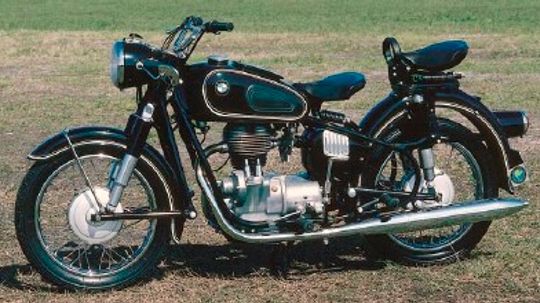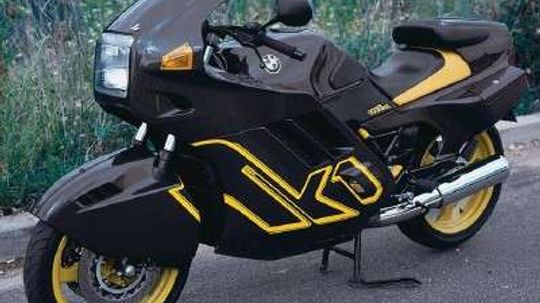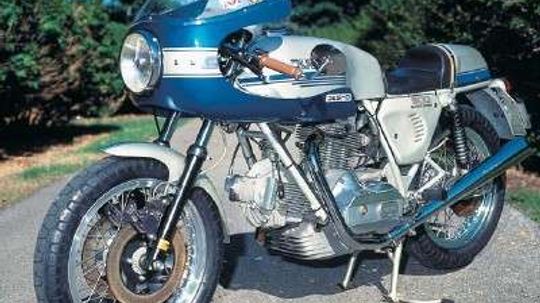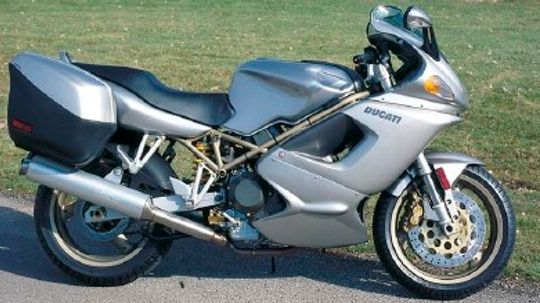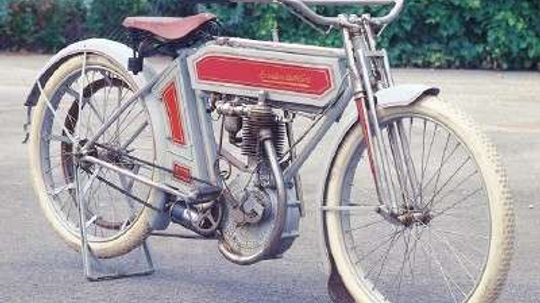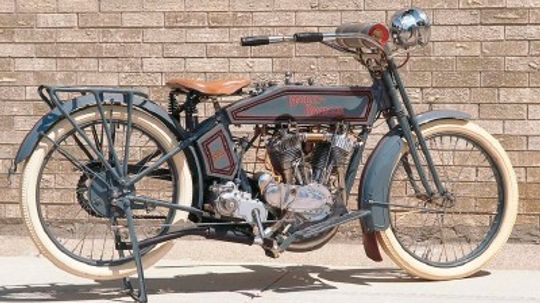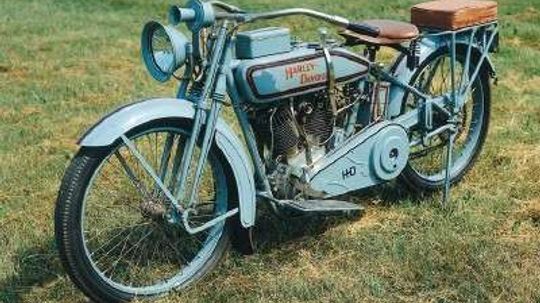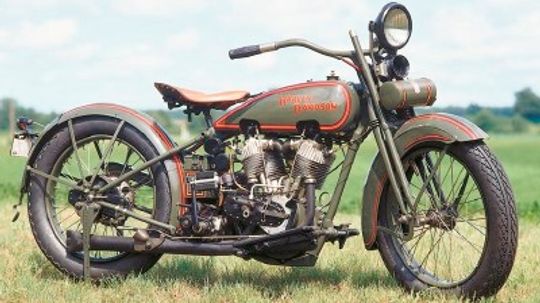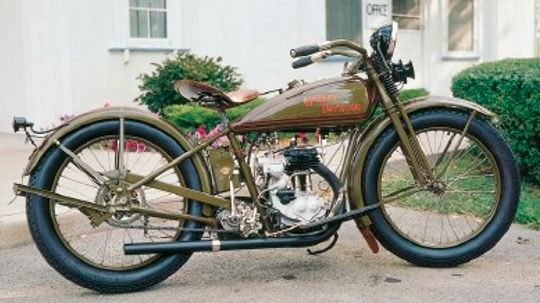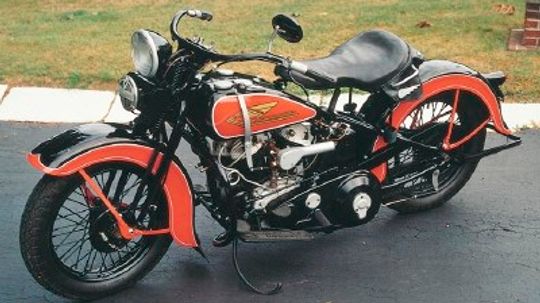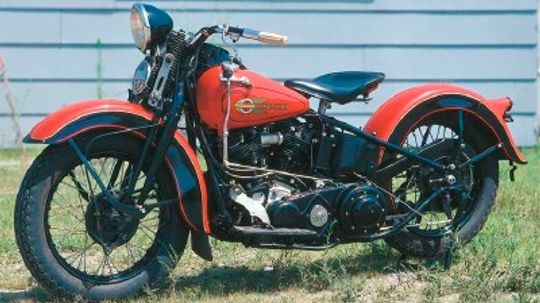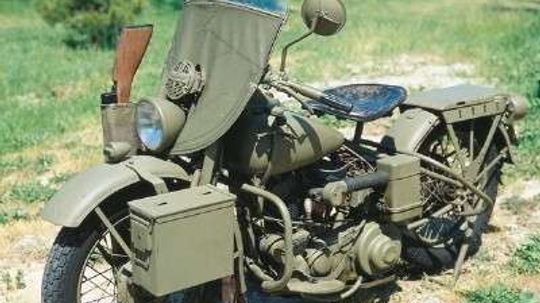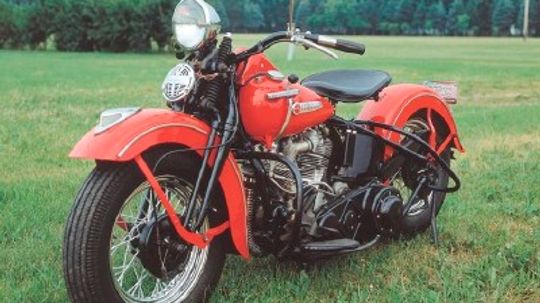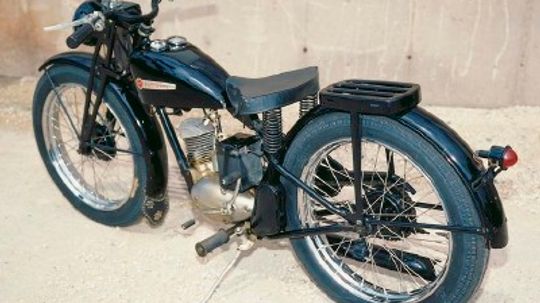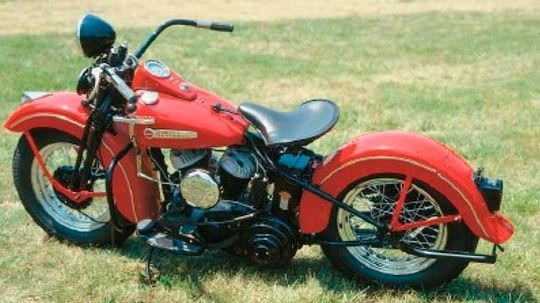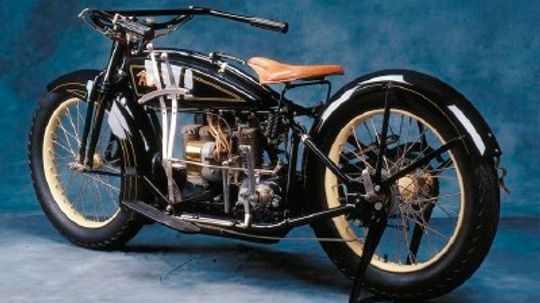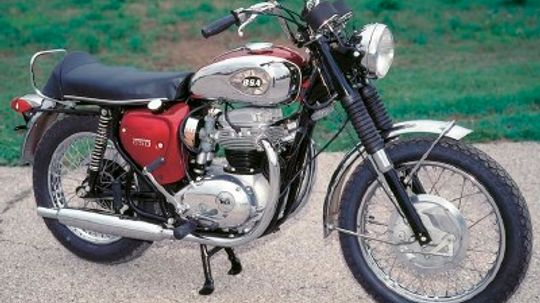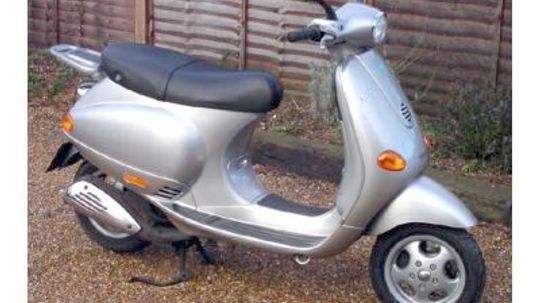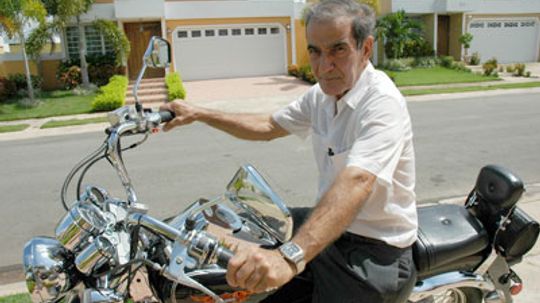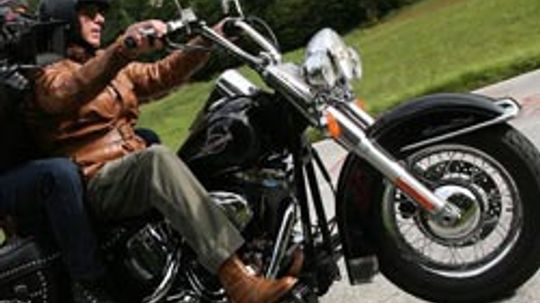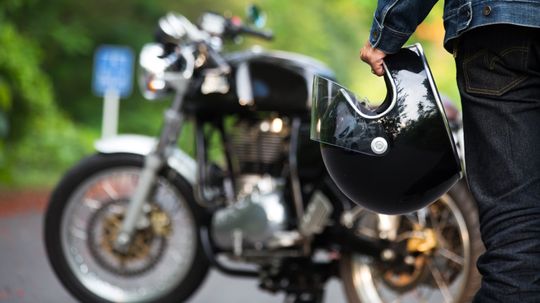Motorcycles and Choppers
The Motorcycles and Choppers Channel explores how these machines are built and customized. Learn all about motorcycles and choppers at HowStuffWorks.
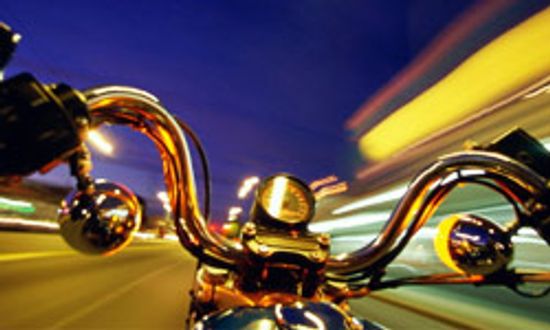
Chopper Pictures
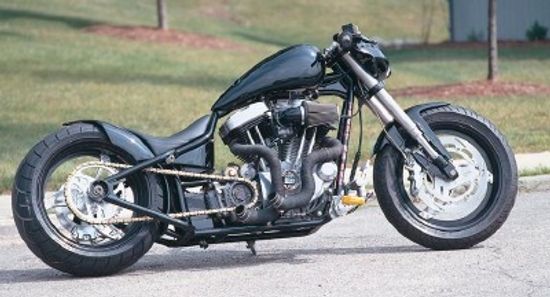
Buell Street Fighter: A Chopper Profile
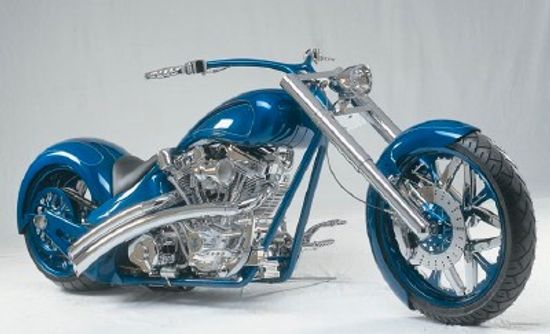
DD Customs Cycles Pro Street: A Chopper Profile
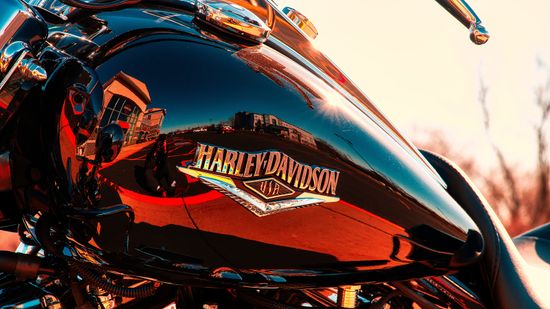
9 Harley Davidson Frame Types Rumbling Down the Highway

Hog Wild: Harley-Davidson Logos Through the Years

2002 Harley-Davidson FXDWG3
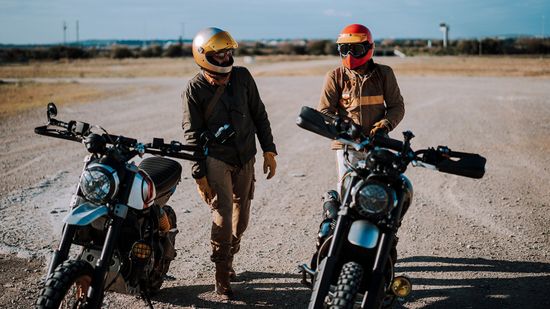
10 Types of Motorcycles That Go Vroom Vroom
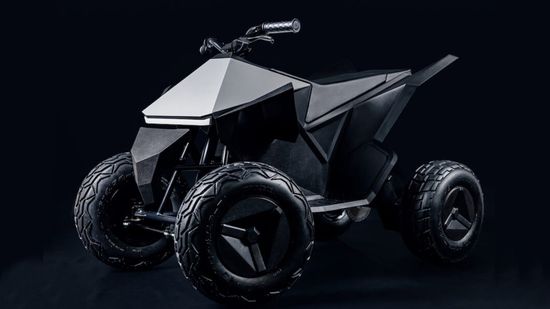
Cyberquad for Kids: Baby's First Tesla
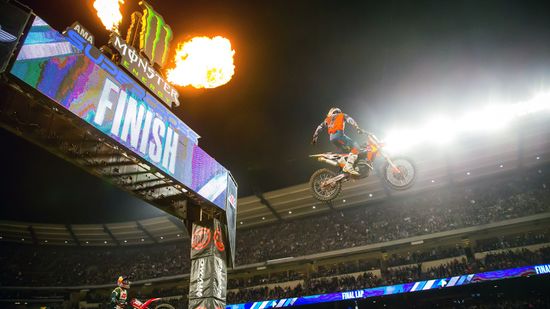
Behind the Scenes at Supercross
Learn More / Page 8
Bimota got its start in the early 1970s by wedding Honda or Kawasaki four-cylinder power with its own exotic chassis and bodywork. The 1992 Bimota Tesi motorcycle was exciting and exotic but it wasn't the star Bimota hoped for. Find out why and see pictures.
The 1965 BMW R-27 motorcycle was a popular single-cylinder design. BMW did not offer another single until the early 1990s when an Italian-built on/off-road model powered by a Rotax engine was introduced. Learn about the 1965 BMW R-27.
The 1990 BMW K-1 motorcycle was a departure from BMW's standard fare. Intended to compete in the sport-touring segment of the market the BMW K-1 was intended to appeal to a more youthful crowd. Learn about the 1990 K-1.
Advertisement
The 1970 Ducati 350 Scrambler motorcycle was quick even without Ducati's hot desmodromic valve train. The 350 Scrambler was considered one of the "tamer" models though it was still fast for a bike of its size. See pictures and learn about the 350 Scrambler.
The 1977 Ducati 900SS had a top speed of over 140 mph making it a force on the racing circuit. The new 900SS added desmodromics to the larger engine pushing the performance envelope even further. See pictures and learn about the 1977 Ducati 900SS.
The 1998 Ducati ST2 aimed for the sport-touring crowd but offered expected Ducati speed and performance. The bike also included a digital display for fuel level engine temperature and time of day. See pictures and learn about the Ducati ST2.
The 1911 Excelsior motorcycle was a product of Schwinn better known for bicycles. As was common for the era, the single was driven by a wide leather belt with progress slowed by a rear coaster brake. Learn about the 1911 Excelsior motorcycle.
Advertisement
The 1915 Harley-Davidson 11F motorcycle had an advanced-for-its day 11-horse F-head V-twin engine. A proper three-speed transmission was offered along with a magneto and electric lighting system incorporating a taillight. Read about this historic Harley.
The 1916 Harley-Davidson J motorcycle was a leap forward in style with a longer lower appearance. Other than the kickstarter, however, there were few mechanical changes of note for this year. See pictures and learn about the 1916 Harley J.
The 1925 Harley-Davidson JD motorcycle introduced Harley's familiar tear-drop-shaped fuel tank. Sidecars were popular accessories of the day as these vehicles often served as a family's primary form of motorized transportation. Read about the Harley JD.
The 1927 Harley-Davidson BA was a single-cylinder motorcycle that was economical but sold poorly. Two versions of the single were offered: a flat-head with eight horsepower and an overhead-valve variant producing twelve horsepower. Read about the Harley BA.
Advertisement
The 1934 Harley-Davidson VLD motorcycle helped Harley survive the Great Depression. The Great Depression killed off all the major U.S. motorcycle manufacturers except for Harley-Davidson and Indian. Learn about the classic 1934 Harley-Davidson VLD.
The 1936 Harley-Davidson EL motorcycle introduced the famous Knucklehead engine to the Harley line. It became one of the most popular Harley-Davidson models of all time. See pictures and learn more about the Harley EL.
The 1938 Harley-Davidson UL motorcycle featured a Flathead V-twin instead of the newer Knucklehead. It was a Sport Solo model with new colors and striping available. See pictures and learn about the Harley UL.
The 1942 Harley-Davidson WLA motorcycle and Harley-Davidson XA motorcycle were weapons of World War II. Wearing the requisite Olive Drab paint, these were 45-cubic-inch V-twins fitted with special wartime equipment. Learn about these Harleys.
Advertisement
The 1948 Harley-Davidson FL motorcycle introduced Harley's overhead-valve Panhead engine. More chrome trim pieces gave the bikes a fancier look and a steering-head lock was added. See pictures and learn about the Harley FL motorcycle.
The Harley-Davidson S-125 motorcycle was a popular civilian bike in the wake of World War II. Producing only three horsepower, the S-125 had a tough time reaching 55 miles per hour. See pictures and learn more about the Harley S-125.
The 1948 Harley-Davidson WL motorcycle was one of the last Harleys with a small V-twin. It proved to be a versatile engine that remained in production for more than four decades. See pictures and learn more about the 1948 Harley-Davidson WL.
The 1920 Ace motorcycle had a short life, but it was a powerful and durable bike. Production ceased in 1922 due to financial setbacks and the death of its creator in a motorcycle accident. Learn about the 1920 Ace.
Advertisement
The 1970 BSA Lightning motorcycle battled faster less-expensive Japanese bikes. BSA didn't survive long afterward as the competition from Japan proved too much. See pictures and learn how the BSA Lightning dealt with its rivals.
The Vespa is a two-wheeled scooter used for easy transportation and loved for high-fashion style. Learn how they're made, the history behind it and the style that has made it so popular.
Wouldn't it be great if one vehicle could handle snow, mud, and regular road conditions without having to even change tires? Enter the Hyanide a vehicle designed by students for the 2006 Michelin Challenge.
Motorcycles, which can achieve fuel economies as high as 85 miles per gallon, provide an attractive alternative to gas-guzzling cars. Learn how motorcycle design has evolved over the years.
Advertisement
It could be the distinctive body styling, or maybe it's that tellatale sound. There's just something about Harley-Davidson motorcycles that hundreds of thousands of folks can't resist. Find out all about this motorcycle icon.
There is no denying that a Harley-Davidson motorcycle has a unique sound. So makes a Harley sound different from other motorcycles?

